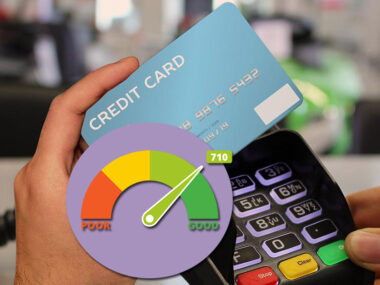A credit score of 688 is a good credit score, but it’s close to falling into the “Fair” range and it’s a long way off from being “Exceptional.”
In fact, it officially falls on the lower end of the official “Good” tier of the FICO credit scoring model. While it’s wonderful to have good credit, the truth is, a score of 688 isn’t much to write home about. You’re still at the bottom end of the Good range and miles away from a “Very Good” or Exceptional score.
The good news is that you don’t have to repair your credit at this point, as your score is just above the “Fair” range, which ends at 669. Nevertheless, it’s important to study your score, understand what is influencing it, and then take steps to continue moving in a positive direction in the future.
Table of Contents
Why Your Credit Score Is 688
The first step in improving a credit score is taking the time to understand why your score is at 688 in the first place. As has already been pointed out, this is a good score, so there are certainly financial habits that you are doing well.
At the same time, this is a bit of a lackluster score that leaves plenty of room for improvement in your various money-related activities.
In order to better understand your score, review the categories listed below. Each of these can impact your score either in a positive or negative manner.
As you read through each one, consider how it has uniquely affected your score of 688. Make notes as you go so that you can better understand what things you should keep on doing and what monetary habits you should amend.
Derogatory Marks
A derogatory mark is one of the easiest negative influencers to spot. These show up on your credit report, usually concerning a failure to make payments on borrowed funds. For instance, a derogatory mark might appear because:
- You allowed an account to become delinquent;
- You have a tax lien or financial civil judgment against you;
- You had an item repossessed;
- You went through a foreclosure or bankruptcy.
Once on your credit report, a derogatory mark can remain for seven years or more, depending on the offense. However, you can try to have it removed by fixing the situation and then sending a goodwill letter to the original lender.
Just to clarify, you may also see a hard inquiry on your credit report. While similar to a derogatory mark, a hard inquiry is not as serious. It simply shows that a lender checked your credit report before giving you a loan.
This can temporarily lower your score for up to a year, but it is a normal event, nonetheless. Hard inquiries shouldn’t raise any red flags unless there are several made within a short period.
Your Payment History
Derogatory marks always imply a failure to pay. However, your payment history takes a more holistic approach to the topic. It considers both your success and failure to make consistent and timely payments on your debt. This can raise or lower your score, respectively.
Good payment history is an essential part of building healthy credit, as it accounts for more than a third of your total credit score.
Your Credit Utilization Ratio
Your credit utilization ratio is another major factor for your credit score. This is calculated by dividing your revolving credit by your total borrowing limit. So, if you borrow $10,000 out of $20,000 of available credit, you have a ratio of 50%.
If your credit utilization ratio on your various accounts gets to be over 30% it can start to hurt your credit score.
Your Total Debt
While your credit utilization ratio takes your revolving credit into account, your total non-revolving credit is also important. This comes from events, such as an auto loan or mortgage, where you borrow a single sum of money all at once and then pay it back in installments over time.
If your total debt gets to be too high, it can begin to chip away at your credit score.
Credit Mix and Age
Finally, it’s important to review your credit mix and age. Your credit mix is the variety of different forms of credit that you’re utilizing. This includes things like credit cards, student loans, auto loans, mortgages, and home equity lines of credit. The greater the variety, the higher your score can go.
Additionally, the average age of your credit matters, with older credit always being better. This can make it difficult to boost your score if you’re either young or have recently opened up a new line of credit.
What Can You Do With a 688 Credit Score?
While a score of 688 shouldn’t be your end goal, it still means you have good credit. As such, it opens up a world of financial opportunities that are often closed or at least difficult to access for those with Fair or, even worse, “Very Poor” credit. Good credit benefits include:
- A greater chance of being approved for either a first-time loan or refinancing an existing loan;
- Access to lower interest rates and higher borrowing limits;
- More negotiating power with lenders;
- Lower security deposits for housing;
- Qualifying for some credit card rewards;
- Passing credit checks by landlords and employers.
While all of these are officially in the cards with a score of 688, many of the benefits may still be limited. This makes it essential that you work to move your score up rather than letting it remain at 688 or, even worse, having it slip back into the Fair credit range.
How to Improve a 688 Credit Score
While you don’t need to repair a credit score of 688, there are still many ways that you can tailor your financial activity to build on your current score. A few suggestions for ways to do so include:
- Updating and genuinely sticking to a budget;
- Reviewing your credit report annually for errors and derogatory marks;
- Using and paying off your credit cards every month;
- Paying down as much of your non-revolving debt as possible;
- Setting goals and building a long-term financial plan to maintain your positive monetary momentum.
If you can continue to cultivate good financial habits like these, you will begin to see your score rise over time. This won’t be an instant event, but with patience, you can continue to steer into the various benefits of good credit both now and for the foreseeable future.
Image Source: https://depositphotos.com/





